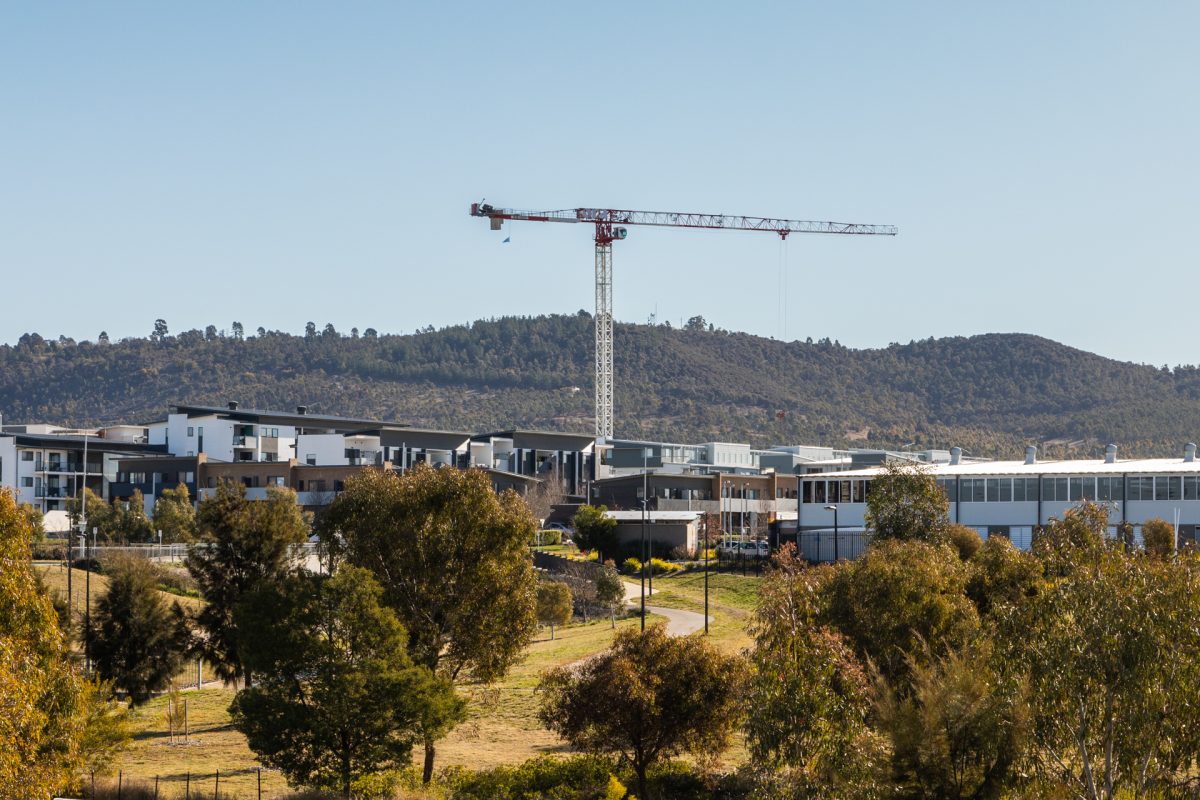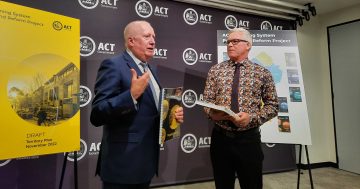
Three agencies will receive more resources to ensure development meets the standards of the new planning system. Photo: Michelle Kroll.
Compliance under the new outcomes-based planning system is to be boosted with the injection of extra staff in three key areas.
But the move to strengthen regulation to ensure good urban design and environmental outcomes will fall short without a monitoring and evaluation framework to understand learnings and measure actual results, according to a community council that has been leading the charge on preserving neighbourhoods and green spaces.
The main regulatory agency – Access Canberra, the Conservator of Flora and Fauna and the Environment Protection Agency – will all receive additional resources to help ensure developers operate within the parameters of the Planning Act 2023 and the new Territory Plan, which the government hopes will help boost the amount of housing in Canberra, particularly in infill areas.
Planning and Land Management Minister Mick Gentleman said that under the new system, there would be a stronger emphasis on well-designed and well-integrated buildings and urban spaces that support wellbeing and liveability.
“The reformed planning system will require new proposals for developments and buildings around Canberra to consider the assessment outcomes in the Territory Plan and relevant Design Guides,” he said.
“It’s important that there is an effective and proactive regulatory system in place to strengthen and protect these outcomes.”
Mr Gentleman said the government was taking an education-first approach to guiding industry on the requirements and changes in the planning system to support compliance and the delivery of improved development outcomes.
The government says the boost to Access Canberra will enable it to conduct targeted audits of building approvals for exempt developments so that they align with the new Planning Act’s objectives, and approved and exempt developments so they comply with the new Territory Plan.
The Conservator of Flora and Fauna’s extra staff will review development proposals so they meet the new Biodiversity Sensitive Urban Design Guidelines.
These guidelines come under the Connecting Nature Connecting People 2022-23 budget initiative to support nature corridors, enrich and build the resilience of urban biodiversity, and enhance the community’s connection to nature.
The EPA’s extra resources will go to the assessment of new development applications.
Inner South Canberra Community Council chair Marea Fatseas welcomed the extra resourcing in the compliance area but said that without a way to evaluate and report on what these agencies were doing, the community would not be able to see if the desired outcomes were actually achieved.
Ms Fatseas said this should be fundamental if the new system was going to work, especially when things such as the new Design Guidelines were broad and subjective instead of the current specific and measurable rules, such as the amount of green space required on a block.
“Instead of looking at what was wrong with the existing system and fixing that, we’ve gone to a discretionary, instead of rules-based, approach, so it will all depend on the quality of the decision-making by the planner,” she said.
Ms Fatseas also questioned the effectiveness of an education-first approach without keeping a close watch on the process.
“Many would respond to that, but as we know, there are cowboys who want to test the limits, so you really need to have a good monitoring and evaluation framework so you can actually see what’s going on,” she said.
Ms Fatseas also called on the government to say what steps were being taken on the promised governance review, saying the community had yet to see the terms of reference.
She said the government was running out of time, given there will be an election next year.
“Will its recommendations be implemented before the election?” Ms Fatseas said.
She said this was important because perceived conflicts of interest stemming from the fact that the Director-General of the Environment, Planning and Sustainable Development Directorate and the Chief Planner will be the same person needed to be sorted out.





















